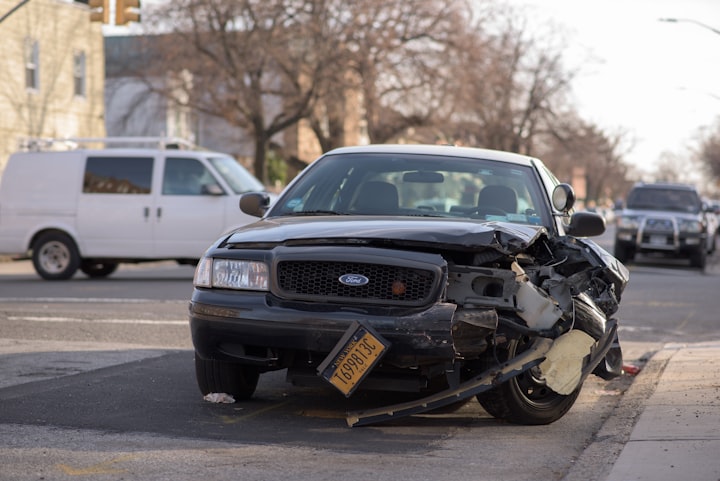4 ways your haulage company can improve its safety
With life finally returning to normal, the UK’s roads are almost certainly going to start getting busier again. Now is therefore the perfect time to start reviewing and improving your safety.

With life finally returning to normal, the UK’s roads are almost certainly going to start getting busier again. Now is therefore the perfect time to start reviewing and improving your safety. Here is what you need to know.
The basics of health and safety
For practical purposes, health and safety in the haulage industry can be split into two parts. One-part deals with protecting the general public. The other part deals with protecting your own employees, particularly your drivers.
Both the public and your staff are at risk from:
• being struck by a moving vehicle;
• collapsing or overturning vehicles;
• falling loads.
Your staff are also at risk from:
• slips and trips;
• falls (including falls from vehicles);
• being struck by moving or falling objects;
• manual-handling issues.
Most of these issues can be resolved simply by implementing and enforcing robust processes for loading and handling. The two major exceptions are being struck by a moving vehicle and collapsing or overturning vehicles. These can be solved by a combination of vehicle checks, appropriate use of technology, effective driver training and meaningful support.
Vehicle checks
Arguably, this is stating the obvious. It is, however, so important that it needs to be explicitly mentioned. Regular vehicle checks are really the only way to pick up on issues before they become serious enough to be noticed. Vehicles should also be properly maintained and serviced.
The appropriate use of technology
The world is getting smarter and the haulage industry should be too. Affordably priced technology can do a lot to make your haulage company safer and more efficient. Here are some of the devices you should consider and why.
Cameras
It has long been recognized that blind spots are one of the haulage industry’s biggest health-and-safety hazards. Fortunately, these can now be addressed with cameras. In fact, if you’re driving into London, they will need to be. London is now enforcing its Direct Vision scheme.
Other cities may implement their own versions of the scheme. Even if they don’t practically and ethically, it makes sense to do everything you can to eliminate blind spots. They are particularly hazardous to cyclists and cycling is on a clear upward trend. This means that, for this reason, alone, the case for cameras is getting stronger all the time.
Cameras also protect your drivers (and your company) from scammers. The size of HGVs makes them easy targets for “crash-for-cash” fraudsters. Onboard cameras are a significant deterrent to this. They can also provide legally admissible evidence for genuine accidents. This, again, protects drivers (and your company) from being wrongfully held to be at fault.
Last, but definitely not least, cameras can be used to help monitor a driver’s performance. This allows you to reward drivers for positive behaviours. It also enables you to address driver-training needs.
Driver-assist technology
Driver-assist technology is basically driving-specific implementations of artificial intelligence. It can prompt and advise the driver, but the driver still retains full control.
• Adaptive cruise control
• Autonomous emergency braking (AEB)
• Blindspot warnings
• Collision warning systems (CWS)
• Driver alerts
• Electronic stability control (ESC)
• Lane assistance (lane departure warnings & lane keep assist systems (LKAS))
• Night vision
• Parking aids
For completeness, having cameras all around the vehicle should eliminate blind spots. It can, however, be useful to implement blind spot warnings as well. It’s better to be extra-safe than sorry.
Truck-specific GPS
Truck-specific GPS systems can identify both trucking-specific hazards and trucking-specific benefits. For example, it can guide drivers away from narrow roads and low bridges. It can also guide them towards service stations and repair shops. As such, it improves safety as well as efficiency.
Hands-free devices
Technically, you shouldn’t need to provide your drivers with hands-free devices. This is the law, and they should be obeying it by themselves. In the real world, however, the easier you make it for someone to do what they should do, the more likely it is that they will do it.
It’s also worth noting that HGV drivers spend a lot longer on the road than most drivers. This means that hands-free devices really need to be comfortable to wear for extended periods. They should also have accessible buttons and preferably voice-activation as well. This allows drivers to keep their hands on the wheel.
They also need to have excellent audio quality. HGV drivers can find themselves in areas with horrendous reception. Some of these can actually be in cities. You want to avoid them being forced to choose between keeping going and finding somewhere to stop and make a call.
Effective driver training
Drivers have to renew their CPC every five years. This is, however, a minimum standard, not a target. Even so, it’s worryingly easy for drivers to slip into bad habits over five years. They may well still pass their CPC because they know what they should do. They just don’t do it when they’re actually working.
Effective continuous training addresses this. What’s more, these days it can often be delivered online. This makes it easier to fit in bite-sized training sessions at convenient times. You could even reward drivers for completing the sessions.
Meaningful support
Drivers are humans. This means that they can experience a wide range of personal issues which can impact their performance. At a minimum, they should be aware that someone’s door is always open to them if they need help. Of course, they need to be clear on whose door that is and how they can find it.
This approach is, however, a bare minimum. It’s far better if companies can be proactive about reaching out to drivers. This can be done in a combination of broadcast content and individual conversations. Broadcast content would typically be something along the lines of a regular company newsletter. This needs to be both engaging and informative to be effective.
The best way to achieve this is to create your newsletter as though you were creating a publication for sale. Think about what your audience wants and make sure you deliver it. Obviously, you’ll include your own messages but present them engagingly. Do not just rehash the same content in each issue.
Ideally, you should also make a point of speaking directly to drivers about their support needs. It may be best to have this done by someone other than their line manager. If all is well, this can be as simple as a five-minute conversation. If it is not, however, then you have given yourself the opportunity to take prompt remedial action.
About the Creator
Andrea Easton
Andrea Easton is the Head of Finance and Operations at Fleet Ex who specialise in quality ex-fleet/end of lease trucks and trailers and are global leaders in the trucking industry.






Comments
There are no comments for this story
Be the first to respond and start the conversation.